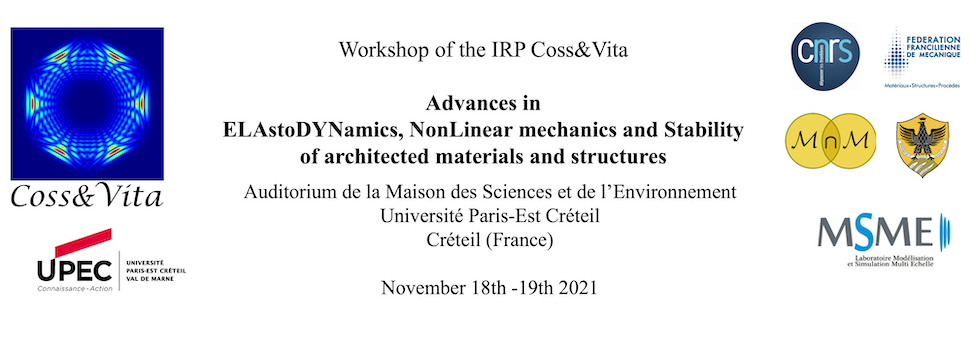This work focuses on the ability for two generalized continuum models to capture mesoscale cell-commensurate instabilities in structured media using a very simple base model.
Indeed, [1] have shown that a periodic arrangement of atoms, linked by complex interactomic potential could lead to short-wave commensurate and incommensurate instabilities and [3] proposes a quasi-continuum model based on strain gradients able to capture both long and short wavelength instabilities. On the other hands, using non-linear springs,[2] studied the ability of a strain-gradient model to capture long wavelength instabilities. As a consequence, the example of a periodic arrangement of non-linear springs, as presented in Fig.1a) below has been proposed. This simple example has been shown to display both long and short-wavelength instabilities depending on the values of the model's non-linear parameters (Fig.1b)).
Two generalized media have been compared: micromorphic and second order strain-gradient media. It is thus shown that the short-wavelength bifurcation points can only be captured by a micromorphic-type medium while the long-wavelength bifurcation points are captured by both models. This concludes that if short-wavelength instabilities are possible, micromorphic-type media are more appropriate to describe, in a contiunous way, the buckling of the mesoscopic stucture.

 PDF version
PDF version
